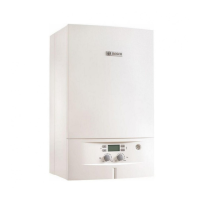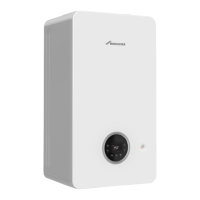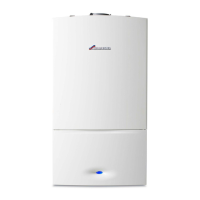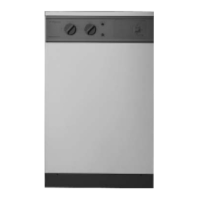Thermal disinfection (WBN 6000-.. HR only)
7
Gaz 6000 W – 6720866248 (2019/07)
6 Thermal disinfection (WBN 6000-.. HR only)
To prevent hot water from becoming contaminated by bacteria such as
legionella, we recommend thermal disinfection after long downtimes.
Alternately, you can have a contractor carry out thermal disinfection.
7 Tips on energy saving
Economy heating
The device is designed for low energy consumption and low environment
pollution but with a high degree of comfort. The fuel supply to the burner
is regulated according to the heat energy demand of the home. If the heat
energy demand is lower, the device continues to operate with a small
flame. Contractors refer to this process as modulating control. The
modulating control keeps the temperature fluctuations low and
distributes heat uniformly inside the rooms. This may mean that
although the device is in operation for a longer period of time, it actually
consumes less fuel than a device that is constantly being switched on
and off.
Heating controls
To optimise the performance of the heating system, we recommend
using a room temperature-dependent controller or weather-
compensated control unit and thermostatic valves as heating controls.
Thermostats
Fully open the thermostatic valves to reach the required room
temperature. Increase the required room temperature at the control unit
if the temperature is not reached after a prolonged period.
Underfloor heating
Never set the flow temperature higher than the maximum flow
temperature recommended by the manufacturer. We recommend using
a weather-compensated control unit.
Ventilating
Close the thermostatic valves when ventilating, and fully open the
windows for a short time. Never leave windows slightly open during
ventilation. Otherwise heat will always be drawn out of the room without
noticeably improving the ambient air.
Hot water
Always set the DHW temperature as low as possible. Choosing a low
setting at the temperature controller means significant energy savings.
In addition, high DHW temperatures result in increased calcification and
thus impair the function of the device (e.g. longer heat-up times or lower
draw-off volume).
DHW circulation pump
Set the DHW circulation pump, if installed, using a time program which is
customised to suit your individual requirements (such as morning,
midday or evening).
8 Troubleshooting
The electronics monitors all safety and control components. If a fault
occurs during operation, the display shows the H symbol and, in
certain cases, the ! symbol, and a fault code (e.g. EA) flashes.
If H and ! appear:
▶ Press key and hold it until the H and ! symbols are no longer
displayed.
The device goes back into operation and the flow temperature is
displayed.
If only H appears:
▶ Switch the device off and on again with the K key. The device goes
back into operation and the flow temperature is displayed.
If a fault persists:
▶ Call an approved contractor or Customer service and notify them of
the fault code and details of the device.
An overview of the display readings can be found on page 5.
Table 3 Data on the device to be forwarded in the event of a fault
9 Maintenance
Inspection and maintenance
The user is responsible for the safety and environmental compliance of
the heating system.
Regular inspection and maintenance are prerequisites for safe and
environmentally compatible operation of the heating system.
We recommend you enter into a contract for the annual inspection and
demand-dependent maintenance with an authorised contractor.
▶ Have work carried out only by an approved contractor.
▶ If any faults are discovered, have them remedied immediately.
Cleaning the casing
Never use aggressive or corrosive cleaning agents.
▶ Wipe the casing with a damp cloth.
Data on the device
Designation of device
1)
1) The information can be found on the data plate in the control panel cover.
Serial number
1)
Commissioning date
System installer

